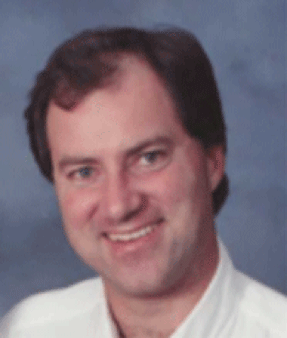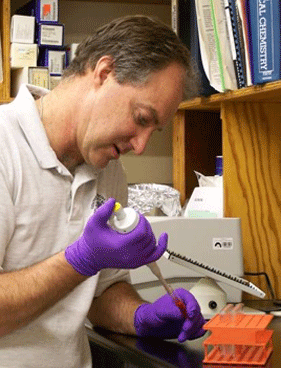 |
 |

| Research Interests: Dr. Robergs has a diverse research agenda, due in part to his support of his Ph.D. students' interests. Dr. Robergs studies muscle metabolic biochemistry using muscle biopsy and 31P MRS techniques during varied exercise conditions, cardiovascular physiology, the energy cost of ventilation, altitude physiology, dehydration/hydration, exercise and thermal stress, and data collection techniques and post acquisition processing issues in indirect calorimetry. Thanks to advanced training and skill in LabVIEW programming, Dr. Robergs is independent in the electronic integration of equipment, as well as custom programming in both data acquisition and post-acquisition processing for a myriad of measurement systems and dependent variables. Selected Publications: Akalan C, Robergs RA, Kravitz L. Prediction of VO2max from an individualized submaximal cycle ergometer protocol. JEPonline 2008;11(2):1-17. Vella CA, Robergs RA. Endurance training, resistance training, body composition, or different disease states can lead to diverse adaptations in cardiac structure and/or function. J Appl Physiol. 2008 Jan;104(1):282 Nelson JL, Robergs RA. Exploring the potential ergogenic effects of glycerol hyperhydration. Sports Med. 2007;37(11):981-1000. Robergs RA, Kwon YS. Quantifying proton release and uptake from the metabolites and reactions of the phosphagen and glycolytic energy systems in skeletal muscle. Health and Sports Medicine. 2007;9(2):1-11. Passino C, Cencetti S, Spadacini G, Quintana R, Parker D, Robergs RA, Appenzeller O, Bernardi L. Persistence of baroreceptor control of cerebral blood flow velocity at a simulated altitude of 5000 m. J Hypertens. 2007 Sep;25(9):1862-70. Yamada PM, Amorim FT, Moseley PL, Robergs RA, Schneider SM. Effect of Heat Acclimation on Heat Shock Protein 72 and Interleukin-10 in Humans. J Appl Physiol. 2007 Jul 5 Yoon BK, Kravitz L, Robergs R.A. VO2max, protocol duration, and the VO2 plateau. Med Sci Sports Exerc. 2007 Jul;39(7):1186-92. |

|
|
| Special Interests: Dr. Robergs is currently working on several projects. 1. A new electronic textbook in Exercise Physiology. This electronic resource is written and programmed using LabVIEW, a data flow programming language common to the engineering and basic sciences. The electronic book also provides many sub-program examples of interactive learning programs and methods of data processing within key topics in exercise physiology. More information about the book can be found on Dr. Robergs' website (www.unm.edu~rrobergs) or from NEXSIS.org (www.NEXSIS.org) where the book is marketed and provided for electronic sale. 2. Computing and modelling proton balance in contracting skeletal muscle. Due to the current inability within basic and applied physiology to adequately explain the development of intramuscular or systemic metabolic acidosis, Dr. Robergs continues to use analytical and organic chemistry to refine explanations of metabolic acidosis. 3. Now that Dr. Robergs has received patent protection for his new system of indirect calorimetry, there is the need to validate the method and improved hardware components of the system. Dr. Robergs will pursue this research this Fall, 2008. 4. Dr. Robergs will be using the data currently available from past research in the lab at UNM to assess the improved prediction of maximal heart rate. This is another project that will be pursued Fall, 2008. |

|
|
